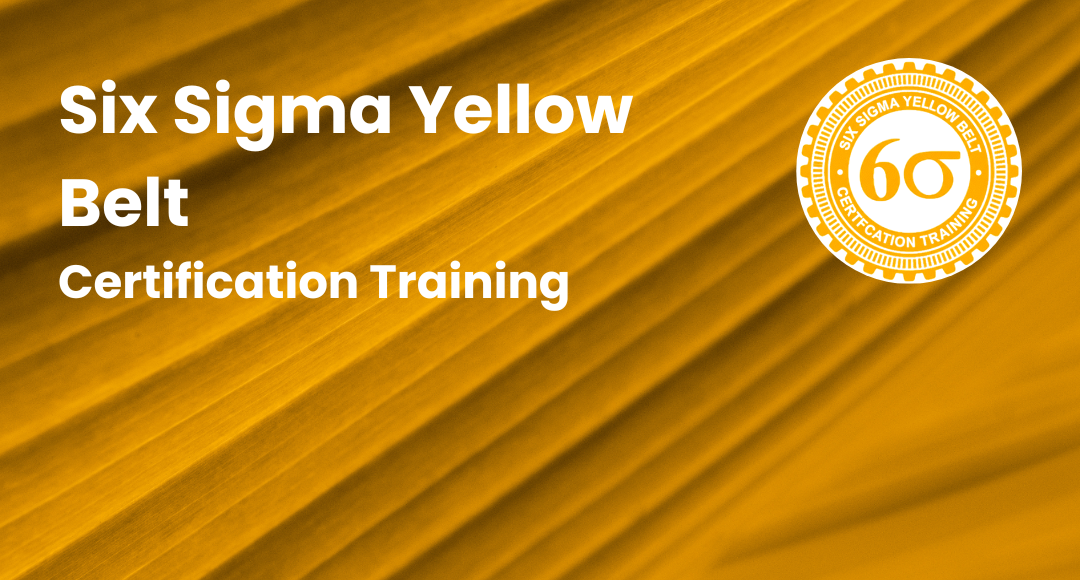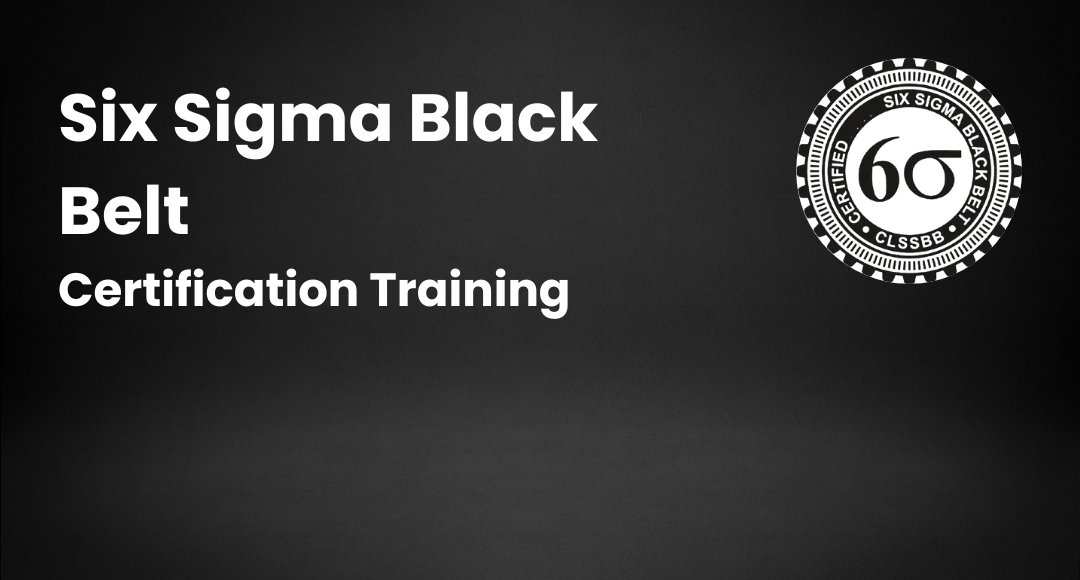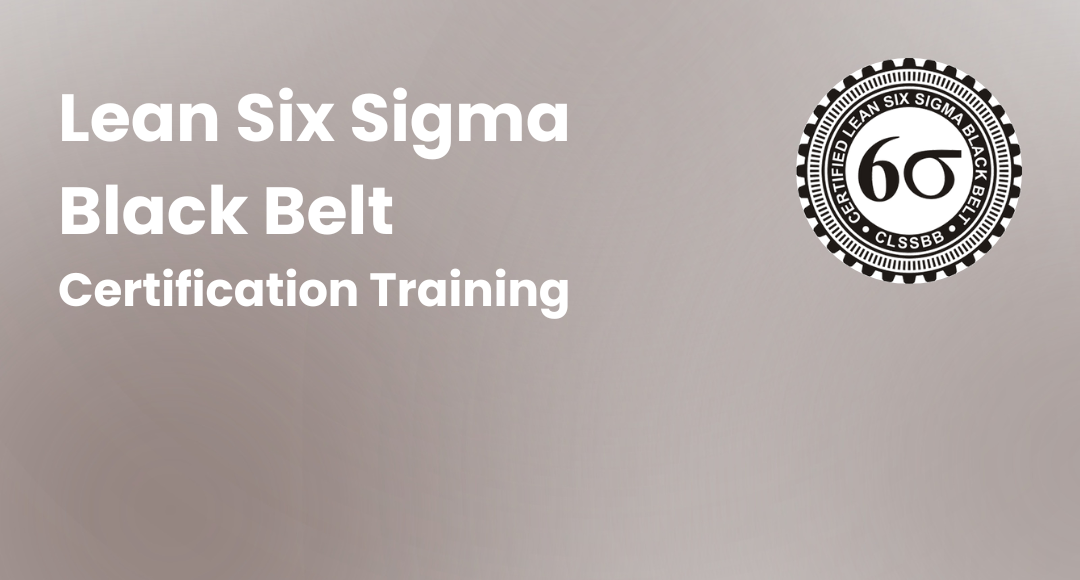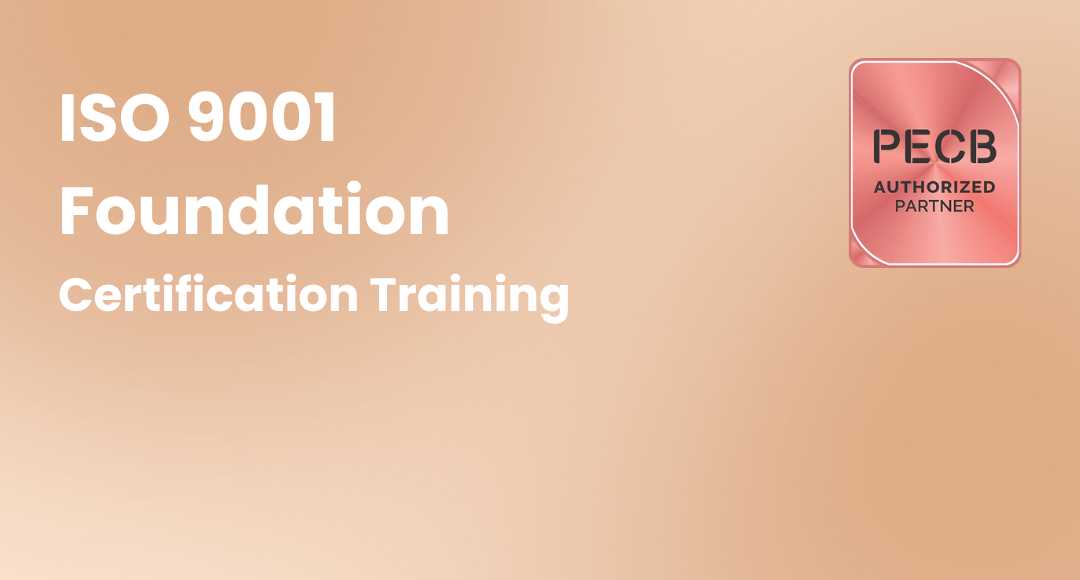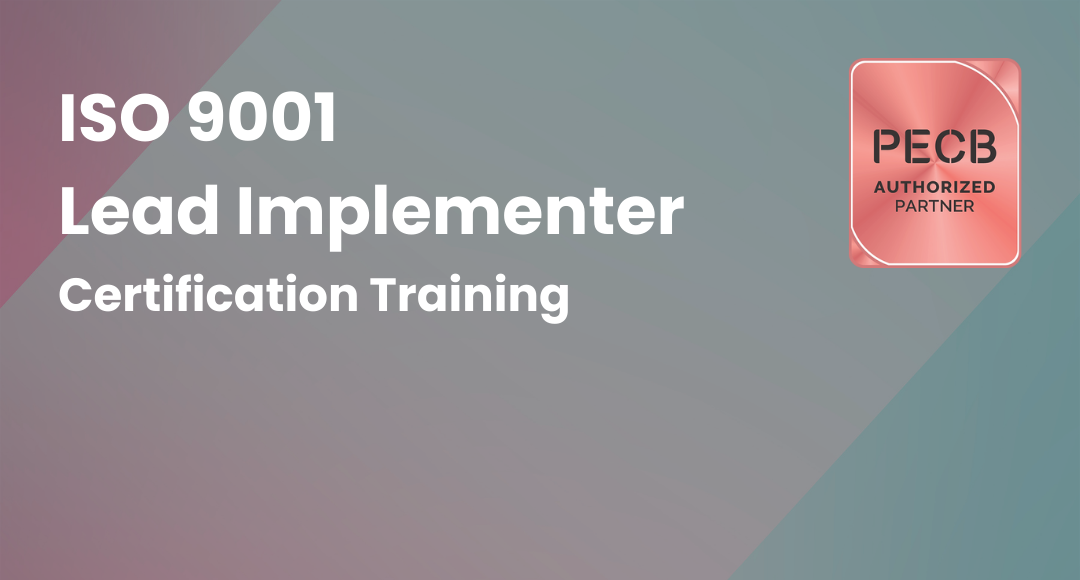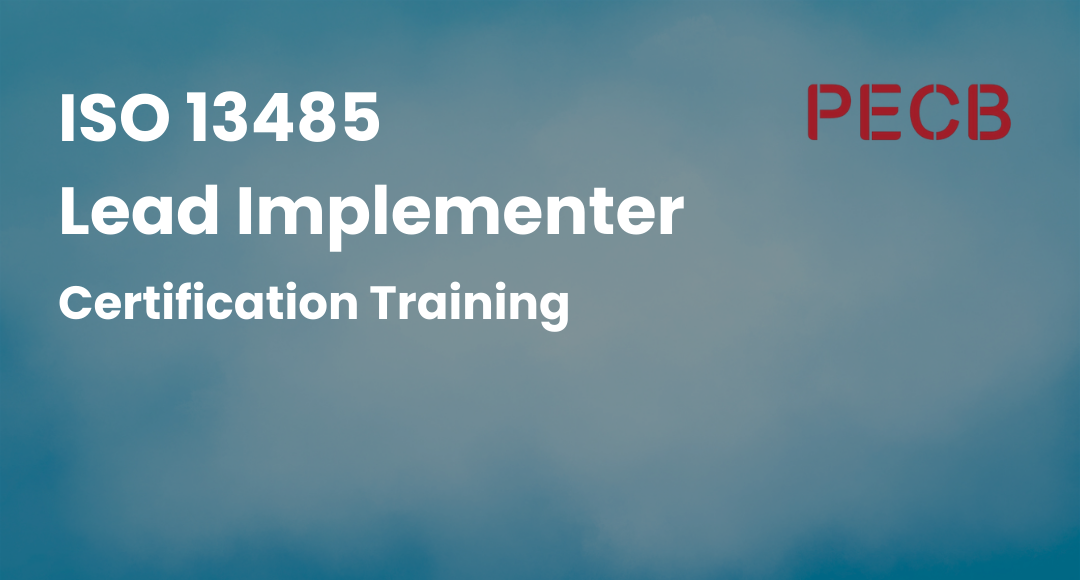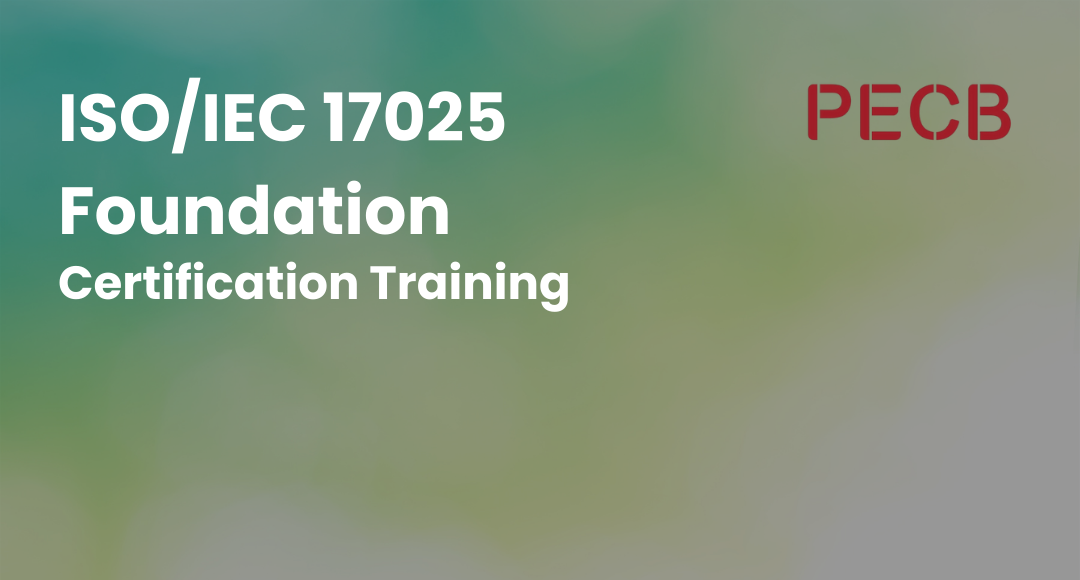Cost of Poor Quality - A Detailed Guide
-
 By Nandini
By Nandini - Published on Dec 8 2023

Table of Contents
- Understanding Cost of Poor Quality and Ways to reduce it
- Costs of Poor Quality: An overview
- Measuring the Cost of Poor Quality
- What are the different types of costs?
- Cost of Poor Quality vs. Cost of Good Quality
- Tools and Technologies for Quality Cost Management
- Strategies for Improvement: Cost Reduction Essentials
- What are the reasons to attend Costs of Poor Quality?
- Best Practices to Lower COPQ
- The Objective of Poor Quality's High Cost
- Conclusion
Understanding Cost of Poor Quality and Ways to reduce it
Are you in the process of accessing quality information regarding Quality Control in Six Sigma? Six Sigma offers a way to assess the costs of poor quality. Costs of Poor Quality, also called COPQ, is used for better workplace organization.
Cost of quality and price of poor quality are defined as the methodology that allows an organization to detect the extent to which its resources are used for the activities that help prevent quality issues. It describes the process to determine the size to avoid poor quality and appraise the organization's product or service quality.
It can be the result of internal and external failures. But having this information allows the workplace organization to determine the potential savings gained by implementing process improvement.
Whenever the detection of error is immediate, the cost can be typically minor, but when the detection of error takes a long time, it can cost more than expected. The best thing about it is that the repair doesn't involve much disassembly or the multiple departments often present. Nevertheless, there is a certain cost to using a poor-quality formula that helps calculate accurate results.
Costs of Poor Quality: An overview
Before going further, let's explore the term costs of poor quality. The costs of poor quality can be defined as the direct and indirect costs that are mainly associated with the defects generated by the entire process. The cost can vary according to the situation. If we talk about cost reduction, it can also depend on how far the product or service goes during the long process before being determined.
It is essential to consider the concept of COPQ in six Sigma definitions to access better results and opportunities. These costs can be easily calculated with the help of requirements. To calculate the costs of poor quality, you need to determine the criteria to be repaired and what was impacted within the main process flow when time and resources had to be spent on the repairs. Make sure to follow the criteria to get accurate results. This COPQ definition is worth keeping in mind.
Generally, it is essential to discuss the worst possibility. When the case gains the worst option with defects that can make customers disappointed, and then it is the time when the costs increase exponentially. You may also need to consider professional help and service for better repairs and repairs of the defects at the customer's location. It is vital to learn how to determine and differentiate between the cost of good quality and cost of poor quality.
Now let's talk about some cost of poor quality examples to understand better. We know that there are actual costs related to the direct reworking of the product, like reduction of error rates that can decrease work. It is essential to know that there are a lot of indirect COPQ examples that are important to consider for better results. Most design costs are like making changes to the design to eliminate any errors in the future. Most of the expenses are resourcing costs, similar to taking resources from different design projects to detect defects.
If we talk about the worst loss, it is brand recognition, including the possibility of the customer going to the competition. Make sure to prefer the COPQ formula to get accurate results. There are many of other cost of poor quality calculation examples as well. It would be helpful to learn about this concept with the help of examples of the cost of poor quality.
Measuring the Cost of Poor Quality
We now focus on the critical issue of measuring in our quest to comprehend the complexities of the Cost of Poor Quality (COPQ). Measuring COPQ is a strategic process that provides insights into your organization's efficiency, customer happiness, and areas for progress. It's not simply about crunching numbers.
Decoding the Metrics for COPQ
Identifying Tangible and Intangible Costs
Understanding the full spectrum of costs, both apparent and hidden, is key to accurate COPQ measurement. Tangible costs like rework expenses are just the tip of the iceberg; delve into intangible costs to get a comprehensive picture.
Establishing Key Performance Indicators (KPIs) for Quality Assessment
Define KPIs that align with your organization's quality goals. These indicators should reflect the success of your quality initiatives and provide actionable insights for improvement.
Quantifying Repair Costs
Breaking Down Direct and Indirect Expenses
Direct expenses are evident, but indirect costs—like the strain on resources diverted from other projects—require careful consideration.
Utilizing COPQ Formulas for Accurate Calculation
Tailor your industry to COPQ calculation formulas. Precision in calculation ensures that your organization gets a true reflection of the impact of poor quality.
Time as a Cost Factor
Understanding the Significance of Timely Defect Detection
Time is money, and nowhere is this more evident than in dealing with defects. Explore how detecting and addressing issues promptly reduces lead time and amplifies cost savings.
How Early Intervention Reduces Lead Time and Amplifies Savings
Determine the correlation between early intervention, reduced lead time, and substantial savings. Learn strategies to make time work in your favor.
Customer-Centric Approach
Evaluating the Impact on Customer Satisfaction
Your customers are the ultimate judges of quality. Uncover how COPQ directly influences customer satisfaction and retention. Happy customers are your best brand ambassadors.
The Role of COPQ in Building and Maintaining Customer Trust
Trust is hard-earned and easily lost. Delve into how COPQ initiatives contribute to building trust by consistently delivering high-quality products and services.
Integration with Six Sigma
Leveraging Six Sigma Methodology for COPQ Measurement
Understand how the principles of Six Sigma seamlessly integrate with COPQ measurement. Explore the synergy between the two methodologies for optimal results.
Drawing Insights from Industry Cases
Case studies provide valuable insights. Explore instances where organizations successfully navigated COPQ challenges, and understand the strategies behind their success.
What are the different types of costs?
It is the cost that is mainly associated with poor quality or services. It has three categories which are the following:

Appraisal costs
The cost of poor quality six Sigma is incurred to determine the conformance to the quality requirements. The appraisal costs are associated with measuring and monitoring the quality activities in the context of appraisal costs. They may include the following-
- Verification by checking the incoming material requires setting up the process and product against agreed specifications.
- It also includes quality audits by confirming that the quality system is correctly working.
- Supplier ratings hold other values, and it requires the approval of suppliers of products and services.
These cost of poor quality definition play an essential role. They are associated with the supplier and the customer evaluation of the purchased materials process to ensure they conform to the specifications.
Internal failure cost
Internal failure costs are incurred to remedy defects discovered before the product, or the service is delivered to the clients. They may include the following.
◉ It can include waste like the performance of unnecessary work or holding out the stock due to an error with poor organization and communication.
◉ Many defective products or materials are worthless and cannot be repaired anymore or even sold.
◉ It also includes the correction of the defective material or the errors.
◉ The analysis of failure is the activities required to establish the causes of internal product or service failure.
These costs appear when the results of the failure of work reach design quality standards and are mainly detected before the transfer to the customer.
External failure costs
If we talk about the external failure costs incurred to remedy defects discovered by the customer, they could include the following:
◉ Repairs and servicing are included in external failure costs for both returned products and those in the field.
◉ It may consist of warranty claims when the failed products are replaced or the services are re-performed under guarantee.
◉ Complaints are associated with the handling and servicing of the customer's criticism.
◉ Returns are also included in the external costs as it provides for handling and investigating rejected or recalled products and service. It also consists of the costs of transportation.
COPQ lean six Sigma mainly appears when the product or service fails to reach the quality of design standard and cannot detect the defects until after the development and service transfer to the customer.
Prevention costs
These costs are vital for every workplace organization. These costs help prevent further charges due to faults and errors. Prevention costs mainly happen to prevent and avoid the issues related to quality. The prevention costs are also associated with the design and maintenance of the quality management system.
The best thing about this cost is that it is planned and incurred before the actual operations. They could include the following.
◉ Prevention costs incur the costs of products and service requirements. This is associated with establishing the specifications for the incoming material with the process and finished product.
This can include the costs of planning quality. However, it is essential to leading a successful business. It creates a quality purpose, reliability, operation, and inspection plan.
Quality assurance is also included in the prevention costs that involve creating and maintaining the quality system.
Training costs are also on the list of prevention costs for the program's development, preparation, and maintenance.
Cost of Poor Quality vs. Cost of Good Quality
Cost of poor quality (COPQ) includes all of the costs related to poor quality goods or services, including both direct and indirect costs. Defects, rework, customer complaints, and possible harm to the brand's reputation are all included in these expenditures. The investments made in upholding high standards, however, are represented by COGQ, which covers costs for effective quality control methods, staff training, and quality assurance initiatives.
- Defining the Terms:
COPQ: Encompasses all costs incurred due to defects, errors, and inefficiencies in the production process. It includes both tangible and intangible expenses related to poor quality.
COGQ: Represents the expenses associated with ensuring high-quality products or services. These costs include investment in preventive measures, training, quality control processes, and advanced technologies.
- Focus on Prevention vs. Correction:
COPQ: Primarily involves costs incurred after the identification of defects. It emphasizes correction, rework, warranty claims, and potential loss of customers due to poor quality.
COGQ: Centers around proactive measures to prevent defects. Investments in employee training, robust quality control processes, and advanced technologies contribute to ensuring the production of high-quality goods or services.
- Short-Term Costs vs. Long-Term Investments:
COPQ: Reflects immediate costs required to rectify defects, handle customer complaints, and manage warranty claims. These costs are often seen as necessary expenses to salvage immediate situations.
COGQ: Involves upfront investments in quality assurance measures that might not show immediate returns. However, over the long term, these investments lead to reduced defects, enhanced customer satisfaction, and increased brand loyalty.
- Measuring Tangible and Intangible Aspects:
COPQ: Encompasses both direct costs like rework expenses and indirect costs such as damaged brand reputation and customer dissatisfaction—factors that are often challenging to quantify precisely.
COGQ: Involves direct costs related to quality assurance processes and indirect benefits like improved brand image, customer loyalty, and reduced warranty claims over time.
- Impact on Organizational Culture:
COPQ: Typically arises from a reactive organizational culture that addresses quality issues as they surface. The focus is on firefighting and rectification.
COGQ: Reflects a proactive organizational culture that prioritizes quality from the outset. There's an emphasis on prevention, continuous improvement, and fostering a quality-centric mindset among employees.
Tools and Technologies for Quality Cost Management
Cost of Quality (COQ) Software: Implementing COQ software enables organizations to systematically track and analyze their quality costs. These tools provide a centralized platform to categorize and measure costs related to prevention, appraisal, internal failures, and external failures. This analytical insight facilitates informed decision-making for continuous improvement.
Statistical Process Control (SPC) Systems: SPC systems play a pivotal role in maintaining consistent quality by monitoring and controlling processes. These tools employ statistical methods to identify variations and deviations in production processes, allowing organizations to take proactive measures before defects occur. This preventive approach significantly contributes to reducing the overall cost of poor quality.
Six Sigma Methodology: Embracing the Six Sigma methodology equips organizations with a structured approach to process improvement. By integrating DMAIC (Define, Measure, Analyze, Improve, Control) principles, Six Sigma identifies areas of inefficiency and defects, leading to enhanced quality and cost savings. This methodology empowers teams to systematically enhance processes and deliver products or services with minimal defects.
Quality Management Systems (QMS): QMS software provides a comprehensive framework for managing quality-related processes. These systems facilitate the documentation of quality standards, regulatory compliance, and continuous improvement initiatives. By centralizing quality management activities, organizations can mitigate risks, ensure consistency, and reduce the long-term costs associated with quality deviations.
Strategies for Improvement: Cost Reduction Essentials
Process Optimization:
Streamlining processes is fundamental to cost reduction. Conducting regular process evaluations and identifying areas for improvement can lead to increased efficiency, reduced waste, and ultimately, lower costs. Embrace methodologies like Lean Six Sigma to systematically analyze and enhance workflows.
Employee Training and Engagement:
Invest in the continuous training and development of your workforce. Well-trained employees are more likely to identify and address quality issues, leading to a decrease in errors and rework costs. Additionally, fostering a culture of employee engagement can result in valuable insights and innovative ideas for cost-saving measures.
Supplier Collaboration:
Collaborating closely with suppliers is a strategic move to ensure the quality of incoming materials and components. Establish clear quality standards and communication channels with suppliers to minimize the risk of defects in raw materials. A reliable supply chain contributes significantly to reducing external failure costs.
Technology Integration:
Embrace technology solutions that enhance quality control and reduce manual errors. Automation, data analytics, and artificial intelligence can play a pivotal role in detecting and preventing defects early in the production process. Investing in the right technology can lead to substantial long-term cost savings.
Customer Feedback Utilization:
Actively gather and analyze customer feedback to identify areas for improvement. Customer insights provide valuable information about product or service quality from an end-user perspective. By addressing customer concerns promptly, organizations can prevent recurring quality issues and build a positive brand reputation.
Continuous Improvement Culture:
Instill a culture of continuous improvement within the organization. Encourage employees at all levels to contribute ideas for enhancing processes and reducing costs. Establishing a cross-functional improvement team that regularly assesses and implements cost-saving initiatives fosters a proactive approach to quality management.
What are the reasons to attend Costs of Poor Quality?
The primary motive of the costs of poor quality is to implement the continuous improvement process if the significant lost opportunity cost to the business failure justifies it. The second motive of these tools is to rank the rate among all other success metrics. It is essential to learn that six-sigma and lean six-sigma mainly revolve around the issue of quality.
To calculate the costs of poor quality, we can put Six Sigma into action. Most of the time, COPQ is calculated during the definition phase of a DMAIC project. COPQ calculation is essential for a better manufacturing process. Use the correct cost of poor quality calculation formula in your workplace organization.

Know about the top reasons to get six sigma certifications
Here are the benefits of COPQ that you should know.
Reduces overall cost
The best thing about it is that it helps to reduce the total cost. If you can detect the error or the defect sooner in any specific products or services, you will have to spend less to repair them. Similarly, if you see the flaws at the end of the production process, it may be cumbersome to disassemble the product and reach the defects.
This can cost more. It is essential to detect the defects early to reduce repair costs. If the imperfections make it to the customer, then it is more expensive, and there are higher possibilities of eroding the customer's confidence in the brand.
Reduce the lead time.
If we talk about the most significant advantage, it helps reduce the lead time. The sooner you can detect the product or service error, the faster you can perform the repair. When you find the defects at the end of production, you may need additional time and new resources.
The costs of poor quality help to detect the error sooner and reduce the lead time. When the defects are found at the customer's location, you will have to give more time for repair and the product may be sent back.
Satisfied customers
It is no secret that every business or organization is required to fulfill customers' expectations. In that case, the cost of poor quality in manufacturing helps to satisfy your customer most effectively. We all know that no one wants to waste time dealing with brands that provide poor-quality products.
In addition, it will help you detect the rate issue related to customer delivery. This will help fulfill customers' requirements by providing the best experience.
Best Practices to Lower COPQ
Certain things are essential to learn before proceeding. These will help you determine the cost of quality and the cost of poor quality.
- It is highly recommended to remember that the quality initiative will always minimize defects. However, it is rare to reach zero defects over a specific time. Therefore, it is essential to implement the proper process to help you identify the error as soon as possible to reduce the costs.
You may have to deal with the additional verification costs, but those costs will be far less than the error costs that go undetected until the lengthy process.
- It is also suggested that if the new products have been moved into process or production early and are experiencing multiple or even critical defect issues, you need to take immediate action to assign the personnel required to deal with the defects before moving with future projects. If you don't prefer immediate action, you may have to face significant risks related to the cost of repair and your customers' reputation.
- It is no secret that it can be very challenging to calculate all the individual hard and soft costs connected to the COPQ forthe project. It would help if you were as exact as possible, or as your data allows you to be. You need to remove any burden from the data.
You make sure to keep the goal of understanding the ballpark savings. Generally, actual savings will never match your estimated savings for the specific project if the improvement has been proceeding at a particular time.
Enroll in Lean six sigma green belt certification and get certified
The Objective of Poor Quality's High Cost
We have discussed almost everything related to the costs of poor quality. But now we will explore more about its objectives. This will help you better understand this concept in your workplace and access more profitable outcomes.
A quality job is crucial for the workplace organization to avoid any complaints or defects that lead to a poor reputation and a low growth level. If you are willing to access a more successful project by providing quality service to the customer, it is essential to consider the implementation of cost of poor quality. This will help you detect the defects most effectively and allow you to access more successful results.
You don't need to face any barriers regarding poor quality and other issues. You can proceed with your workforce to increase the production level of your organization and avail better outcomes. The costs of performing a quality job, conducting quality improvement, and achieving the goal must be managed for the long-term effects of the organization.
These costs can be the most effective way to avoid any loss in the future. These costs are considered an accurate quality measure and crucial for every business or organization. These costs can be calculated using a cost-of-quality analysis.
Get certified with Lean Six Sigma Black Belt certification and level up in your career.
COPQ analysis, or cost of poor quality analysis," provides an effective process to assess the effectiveness of quality management and also means that it determines problematic areas and opportunities.
It is essential to know that the cost of quality is as high as the communication tools. Therefore, when there is the establishment of the quality cost system, it should become more dynamic and need to have a positive impact on the achievement of the organization's mission as well as the goals and objectives of the organization.
Conclusion
When a specific part of the service moves to a different department, it becomes more expensive to repair and fix. In that case, there will be more requirements for disassembly. You may also need multiple personnel with more time and coordination. Still, if we talk about the cost of finding errors at this point, then it is manageable.
However, it cannot be preferred to immediate identification. There is no hiding the fact that the cost of poor quality metrics and the coordination increase whenever the problem is undetected until right before handoff to the customer in the most effective way. You can also expect to see the repair costs skyrocket.
Knowing how to assess these costs is a key part of running any service in any sort of industry. It is therefore logical to try and gain knowledge of this if at all interested in managerial capacity in the workplace.
Sprintzeal offers courses in six sigma that might be of great help for those seeking to learn more on this. It will enable you to determine the COPQ quality of the service offered. It is always a useful skill to be able to determine the cost of poor quality if you are looking to grow the business on a long-term basis.
With the help of a Sprintzeal course in this regard, you will be able to prepare your own cost of poor quality chart, which will enable you to run your services in a far more efficient way. Get accredited now!
To get full details about six sigma training program, chat with our course expert
Subscribe to our Newsletters
Popular Programs
Trending Posts
Quality Management System – QSM Approaches and Methodologies
Last updated on Aug 22 2024
Quality Management Interview Questions 2026
Last updated on Sep 21 2022
Leadership vs Management - The Ultimate Guide
Last updated on May 9 2024
The Ultimate Guide to ISO 9001: Boosting Quality and Certification Success
Last updated on Jul 24 2024
Lean Six Sigma on Resume for Rewarding Career Benefits
Last updated on Nov 20 2023
DMAIC for Warehouse Safety: From Hazards to Control
Last updated on Aug 20 2025
Categories
- Other 69
- Agile Management 47
- Cloud Computing 56
- Project Management 173
- Big Data 66
- Business Management 88
- Digital Marketing 78
- IT Service Management 29
- Programming Language 58
- AI and Machine Learning 77
- IT Security 112
- Quality Management 78
- IT Hardware and Networking 26
- Microsoft Program 4
- Workplace Skill Building 13
- Risk Management 9
- Information Security 8
- Leadership and Management 9
- Corporate Training and Development 1
Trending Now
Top Career benefits of Lean Six Sigma Green Belt
ArticleLean methodology, Six Sigma methodology and Lean Six Sigma Explained
ArticleSix Sigma Black Belt Certification – Value and Career Benefits in 2026
ArticlePareto Chart in Six Sigma - Explained
ArticleSix Sigma Certification Guide - A Professional's Guide
ArticleQuality Control Explained – Six Sigma
ArticleQuality Assurance in Six Sigma Explained
ArticleQuality Assurance vs Quality Control
ArticleTotal Quality Management - A Complete Guide for Beginners
ArticleSix Sigma Certification – Everything you Need to Know About Getting Certified
ArticleLean Six Sigma on Resume for Rewarding Career Benefits
ArticleSix Sigma Yellow Belt Certification - Six Sigma for Beginners
ArticleQuality Management Interview Questions 2026
ArticleQuality Manager Interview Questions and Answers for 2026
ebookService Delivery Manager Interview Questions and Answers (With Examples)
ArticleSix Sigma Interview Questions and Answers 2026
ArticleA Supply Chain Management Guide to Mastering Logistics End to End
ArticleSenior Quality Manager Interview Questions and Answers 2026
ArticleTop Quality Analyst Interview Questions and Answers 2026
ArticleFinancial Analyst Interview Questions and Answers 2026
ArticleRisk Manager Interview Questions and Answers 2026
ArticleCompliance Manager Interview Questions and Answers 2026
ArticleOperation Manager Interview Questions and Answers
ArticleHow to Become a Quality Manager - Career, Job Scope and Certifications
ArticleHow to become a Quality Analyst
ArticleSix Sigma Certifications - Reasons Why you Should Get Them
ArticleTop Qualities of a Good Manager and a Leader
ArticleLearn about Statistical Process Control (SPC) and its top applications
ArticleImplementing 5S Methodology for Better Work Efficiency
ArticleWhat Is Lean Management?
ArticleBest Six Sigma Books in 2026
ArticleLeadership vs Management - The Ultimate Guide
ArticleQuality Assurance Plan - Six Steps To Quality Assurance Plan
ArticleOperational Planning Creation, Key Elements and its Benefits
ArticleA Complete Guide to Product Life Cycle Stages 2026
ArticleDMAIC Methodology - The Ultimate Guide
ArticleSix Sigma tools for DMAIC Phases
ArticleWhat Is Lean Manufacturing?- An Overview
ArticleThe Lean Continuous Improvement Model: A Comprehensive Guide
ArticleDMAIC vs. DMADV: Key Differences and Choosing the Right Six Sigma Methodology
ArticleA Deep Dive into the Power of Lean Continuous Improvement Process
ArticleIntroduction to Lean Manufacturing- Definitions, Framework, and More
ArticleLean Continuous Improvement Methods for Business Excellence
ArticleUnderstanding the Key Principles of Lean Manufacturing
ArticleSecret to Unlock Organizational Excellence: Stages of Continuous Improvement
ArticleLean Continuous Improvement: A Detailed Guide to Mastering Organizational Quality
ArticleLean Waste Management: The Ultimate Guide 2026
ArticleA Deep Dive into Lean Continuous Improvement Tools
Article8 Wastes of Lean - Strategies for Identification and Elimination
Article5 Lean Continuous Improvement Principles to Supercharge Your Operations
ArticleThe Ultimate Guide to Lean Manufacturing
ArticleUnderstanding Lean Manufacturing's Pros and Cons
ArticleLean Waste Reduction Strategies: Boost Efficiency and Cut Costs
ArticleTop 10 Lean Manufacturing Tools for Optimal Productivity
ArticleBeyond the Basics: Benefits of Lean Continuous Improvement
ArticleWhat are Quality Standards? | A Guide to ISO Standards
Article7 Important Types of Quality Management System
ArticleISO 9001 Standard: Benefits and Certification
ArticleA Comprehensive Guide to Quality Management Systems
ArticleBenefits of QMS Certification for Your Business
ArticleStep-by-Step Implementation Guide to ISO 9001
ArticleThe Ultimate Guide to ISO 9001: Boosting Quality and Certification Success
ArticleEssential Components of a Quality Management System
ArticleQuality Management System – QSM Approaches and Methodologies
ArticleHow to Effectively Implement a Robust Quality Management System?
ArticleExplaining QMS Documentation Structure: Benefits and Best Practices
ArticleWho Needs ISO 9001 Certification and Why?
ArticleKey Elements of ISO 9001:2015 Quality Management System
ArticleOvercoming Common Challenges in ISO 9001 Certification: Tips and Best Practices
ArticleBest Quality Management Tools
ArticleTotal Quality Management (TQM) vs. Six Sigma
ArticleQuality Manager Salary: What Freshers & Experts Earn in 2026
ArticleCertified Scrum Product Owner: Job Roles And Responsibilities
ArticleTips for Continuous Integration Testing: Streamlining QA
Article10 Quality Management Strategies Adopted by Top Managers
ArticleDMAIC for Warehouse Safety: From Hazards to Control
ArticleLive Data, Faster Fixes: How Smart Monitoring Is Rewriting Quality Control
Article
